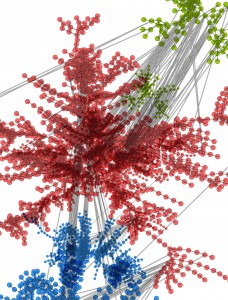The Neurosciences Institute, Joint Center in the Masters in Neuroscience from the Miguel Hernández (UMH) University of Elche and the Higher Council for Scientific Research (CSIC) develops, has developed a system based on human brain model to design networks consist of multiple interconnected systems. The goal is to prevent electrical or telecommunications networks from collapsing when a node is attacked, even when there are no backup systems. This research has been published in the scientific journal Nature Physics.
The Neurosciences Institute researcher Santiago Canals has conducted this study, along with a team of physicists from Brazil, Argentina and the USA, led by Professor of City College of New York and by Hernán Makse University researcher Buenos Aires (Argentina) Mariano Sigman. The work is based on feedback between neurobiology and statistical physics, which was used to develop and validate the proposed model.
The networks, both natural and artificial, are mainly composed of nodes, links and hubs. Nodes are the endpoints of the network and hubs are those nodes where connections converge multiple nodes, which is generally known as links. In the article published in Nature Physics, has shown that the stability of a network system relies on the relationship between the internal structure of each network and the pattern of connections between networks. First, there must be convergence. This means that most of the nodes that connect with other nets are of the same degree with the same number of connections. The second is that these nodes «inter-networking» should be mostly hubs.
To carry out the study, has been essential to use a stable biological model with which to compare the theoretical results with the truths that nature provides, subject to centuries of evolution. Therefore, it is of great importance that have used data from two completely independent experiments on the functioning of the human brain. The first was performed to people at rest, while the second was performed to people doing simultaneous tasks where brain networks are activated in each case entirely different from one experiment to another. Using fMRI, using established techniques for recreation brain networks through the pictures taken, the multidisciplinary team found that in both cases the model predictions were fulfilled.
The transfer of these findings to the field of mathematics and engineering networks allow you to build more efficient networks. The work has been possible thanks to the collaboration of the Institute of Neuroscience, The City College of New York (USA), Universidade Federal do Ceará in Brazil and the University of Buenos Aires (Argentina).

